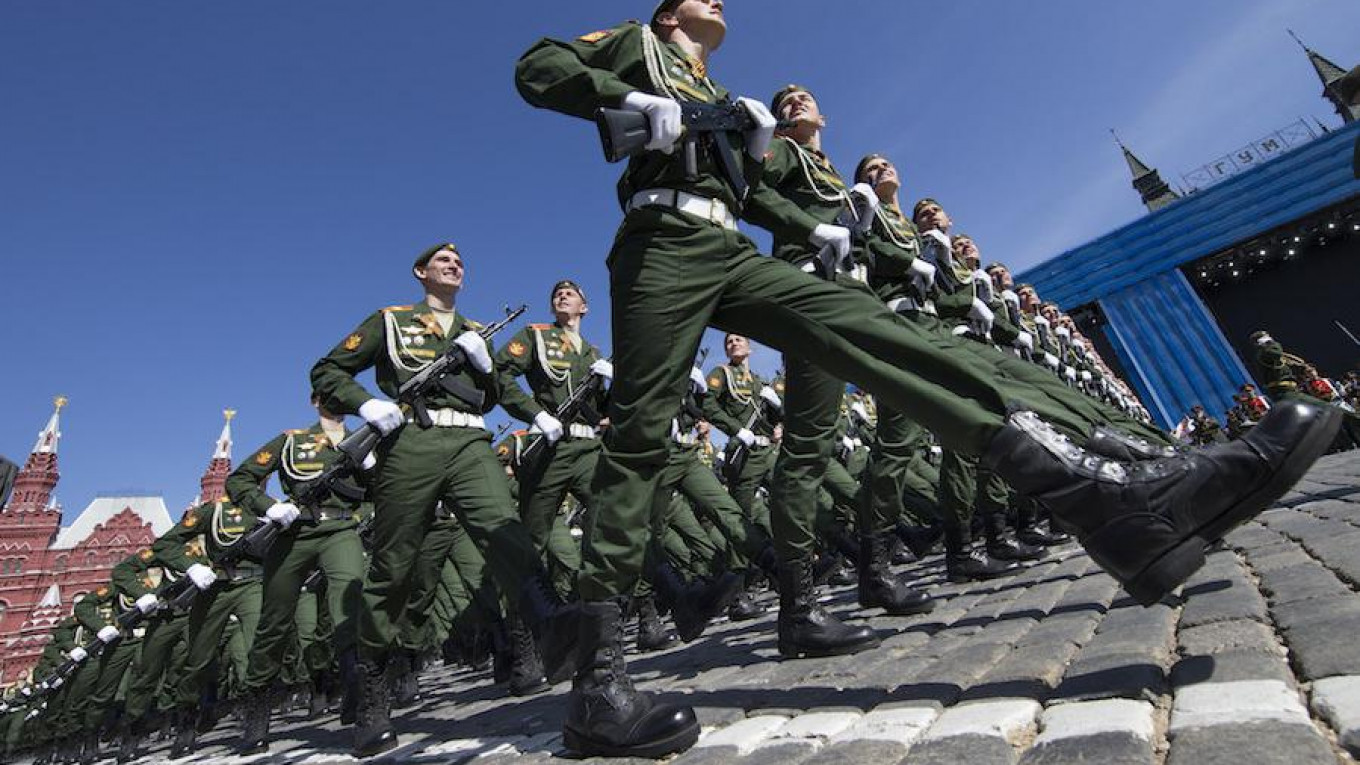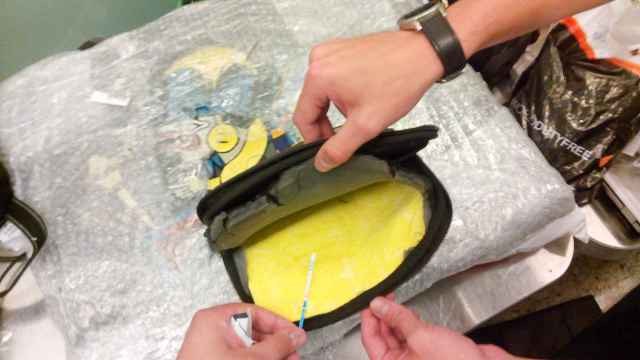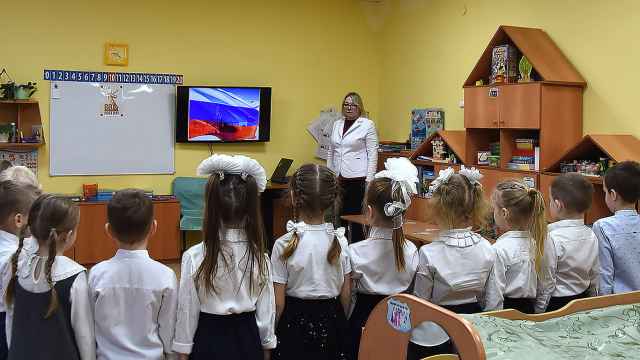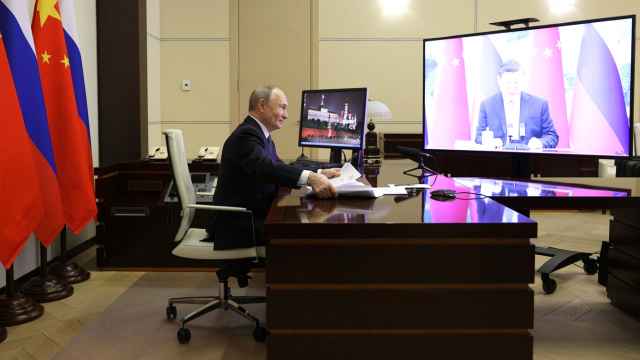Reports that Russia has cut its defense budget this year by a staggering 25 percent might give the impression it has abandoned a decade-long military modernization drive. It hasn’t. In fact, the campaign to rebuild the Russian military after years of decay is still going strong.
Seven years ago, Vladimir Putin embarked on his third attempt to fix the military. In Putin’s view, Russia could not be taken seriously if it could not defend itself, and military spending meant job creation — an important political consideration.
His overhaul of the armed forces would see 70 percent of its Soviet-era hardware replaced by 2020. That plan was as ambitious as it was expensive.
To meet targeted procurements of new arms, planes, tanks, ships and nuclear missiles, around 20 trillion rubles ($700 billion at the time, now closer to $300 billion) would need to be spent over the course of the decade.
Reports now surfacing that Russia is cutting its 2017 defense budget by 25 percent — from 3.8 to 2.8 trillion rubles — aren’t what they seem. In fact, these figures are misleading.
Strategic Reduction
A 25 percent cut to defense spending would decimate an important Russian industry. Not surprisingly, Russia avoided that. Instead, the government decreased the defense budget by 7 percent — from 3.1 trillion rubles to 2.8 trillion.
But that doesn’t mean the Kremlin is less committed to rearmament. Rather, this change reflects fairly standard financial maneuvers.
The Defense Ministry hoped to pay off 740 billion rubles owed to defense industry firms in one go, rather than have the debt add up on later budgets.
This would have reduced future defense spending, since defense firms were factoring debt servicing into their pricing, says Michael Kofman, an analyst of the Russian military at the Virginia-based CNA think tank. “It was — if anything — supposed to be a cost saving measure.”
Defense spending will actually remain relatively high compared to previous years: 2.8 trillion rubles ($65.4 billion), or about about 14 percent higher than 2014’s budget. And the cut was planned — peak spending on the arms program has already passed. There will be further reductions in 2018 and 2019, but they will stabilize at a predicted 3.2 and 4.8 percent.
Rearmament in Brief
The year 2014 is an important benchmark for Russian defense budgets. Three years after the 2020 program began, spending kicked into high gear and Russians saw what their tax dollars were buying.
The defense budget rose about 18 percent over 2013, reaching almost 2.5 billion rubles, and rearmament has consumed about two-thirds of Russia’s annual defense spending since.
On May 9, 2014, Putin unveiled the future look of his increasingly powerful military on Red Square. A column of new armored vehicles, including the much-hyped Armata T-15 battle tank, stormed Russia’s most famous landmark as journalists and foreign dignitaries gathered along the Kremlin wall.
But 2014 was also the last year the 2020 modernization program progressed according to plan. In 2015, an economic crisis propelled by Western sanctions and a drop in global oil prices sent the ruble into free-fall. Spending increased, but defense firms were cut off from Western credit lines and high-tech components. Production costs of new equipment increased.
These economic challenges altered the 2020 program in key ways. First, the 2015 budget was trimmed from 3.3 trillion rubles to 3.1 trillion ($57 billion at the time) — still a net increase of about 25 percent over 2014. Second, procurements of new hardware, such as the Armata tank and the Sukhoi T-50 stealth fighter jet, were curtailed.
The relationship between the defense budget and completion of the modernization program is not black and white, says Ruslan Pukhov, director of the Center for the Analysis of Strategies and Technologies, a Moscow-based think tank.
The full picture is a state secret, but what is clear is that major contracts have stalled, and there is “room for economizing,” says Pukhov.
For example, the original program was budgeted for four French-built Mistral-class helicopter assault ships. France chose not to deliver them in response to Russia’s annexation of Crimea in 2014. Two hundred Ukrainian-built Antonov transport planes were also on order, but cancelled later. Still, the Defense Ministry has been forced to curtail procurement of other weapons and hardware, too.
2025 Program
In order to meet at least the spending targets for 2020, Russia would have needed to begin hiking its defense budget by 10 percent each year beginning in 2016. But spending that year remained essentially flat relative to 2015. With a 7% cut in real defense spending in 2017, and additional cuts expected in 2018 and 2019, the goal appears to be out of reach.
That is not to say that Putin’s militarization drive has been abandoned.
Government and military officials have been working under the radar on a second, follow-on procurement program set to cover 2018 to 2025. The new plan, which has not yet been released, is expected to pick up on some items that slipped from the 2020 production schedule.
“What is clear is that upcoming program will be much less ambitious than the current one,” Pukhov says.
A Message from The Moscow Times:
Dear readers,
We are facing unprecedented challenges. Russia's Prosecutor General's Office has designated The Moscow Times as an "undesirable" organization, criminalizing our work and putting our staff at risk of prosecution. This follows our earlier unjust labeling as a "foreign agent."
These actions are direct attempts to silence independent journalism in Russia. The authorities claim our work "discredits the decisions of the Russian leadership." We see things differently: we strive to provide accurate, unbiased reporting on Russia.
We, the journalists of The Moscow Times, refuse to be silenced. But to continue our work, we need your help.
Your support, no matter how small, makes a world of difference. If you can, please support us monthly starting from just $2. It's quick to set up, and every contribution makes a significant impact.
By supporting The Moscow Times, you're defending open, independent journalism in the face of repression. Thank you for standing with us.
Remind me later.






